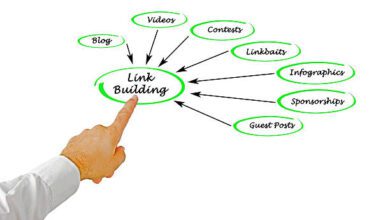How On-Page Optimization Can Transform Your Online Presence


As the world of digital marketing continues to evolve, businesses need strong SEO strategies to stay competitive. On-page optimization is an essential strategy to improve your site’s visibility and rank higher in search engine results. This blog post explores how this strategy can transform your online presence.
Learn the basics of page optimization.
When entering the world of on-page optimization or as it is commonly referred to in the world of on-site SEO, it is important to understand that individual websites need to achieve higher search engine rankings and become more relevant. is about customization. Get Traffic Think about how to best dress your websites up to be seen by search engine algorithms. It is a combination of various elements like keyword optimization, URL structure, meta tags and of course content quality.
To further simplify this concept, here’s an analogy: If your website were a book, page optimization would include book covers, chapter headings, and even font styles. These are factors that help your visitors and search engines understand what your book (or website for that matter) is about.
The goal here is to guide search engines in interpreting and identifying the context and meaning of your content, which will increase your visibility in searches related to your business. It’s not just about pleasing the search engines, but a big part of the process involves improving the user experience and making your content more useful and convenient for your audience. After all, happy users mean happy search engines. Let’s take a look at this strategy and how it can play an important role in reshaping your online presence.
The Role of Keywords in On-Page Optimization
Keywords act as a bridge that connects your content to what your target audience is actively searching for. Mastering the art of using keywords is essential when it comes to on-page optimization. Your main task is to put yourself in the shoes of potential customers and identify the keywords they will use to search for the products or services you offer.
Think of these keywords as breadcrumbs that lead your audience to the treasure they’re looking for, your high-quality content. When these valuable keywords are strategically linked to your website content, search engines will identify these recommendations during their searches. Result? Your site is more likely to rank higher in search engine results, making your site more visible and attractive to your target audience.
Of course, these keywords aren’t just a random distribution. Effective keyword placement means integrating them seamlessly into your content in a way that naturally improves meaning and readability. They should be placed strategically in title tags, titles, body text, URLs and meta descriptions, but always in a way that the human eye can read naturally.
Using keywords is important to optimizing your pages, but it’s just as important not to overdo it. Keyword stuffing or inserting content with keywords can lead to search engine penalties. Remember, search engines are getting smarter every day, their algorithms focus more on content quality than keywords. So balance is key.
In short, successful keyword optimization involves understanding your audience, knowing what they’re looking for, and providing relevant, high-quality content using those keywords. It’s a win-win situation that satisfies both your potential customers and search engines, thereby increasing your online visibility.
The power of Meta descriptions and tags
When you get past the layers of on-page optimization, you find descriptions and Meta tags, small but impactful elements that work in the background. When done correctly, Meta descriptions act as an interesting trailer for the movie your website is portraying. They give search engines and users a quick overview of what they can expect from your content. Therefore, a Meta description can be compelling because it requires a user to click or scroll to your page. They have the potential to significantly increase your click-through rate by improving the overall visibility of your website.
On the other hand, Meta tags, especially title tags, play an important role in your website’s search engine ranking. Think of them as the main packaging that summarizes the main themes of your site’s content for search engines. This allows search engines to better categorize your content, which means your website will appear higher in relevant searches.
But here’s the thing: Meta descriptions and tags alone aren’t enough. They should be well-crafted, with strategic integration of keywords and a clear and concise presentation of the value of your content. Not only does this help search engines understand your website better, but it also give potential visitors a compelling reason to click on your website.
So next time you’re working on on-page optimization of your website, don’t forget to pay attention to your descriptions and Meta tags. Harness its power to deliver your content to both search engines and consumers and you can significantly improve your online visibility. Although these details may seem small, their impact on your website’s SEO performance varies greatly. They have a huge impact on the world of on-page optimization.
Importance of quality content in website optimization
High-quality content is the foundation of any successful on-page optimization strategy. It acts as a beacon that attracts and captivates your audience so that they not only visit your website but also continue surfing. High-quality content can significantly increase the time users spend on your website. This signals to search engines that your website is valuable, which can have a positive impact on your search rankings.
However, the impact of high-quality content goes beyond improving longevity. It also encourages social sharing, a powerful tool that can significantly increase your reach and visibility online. When users find your content useful and engaging, they are more likely to share it with their networks, thereby exposing your website to a wider audience.
Standing out in a sea of content is key and nothing beats quality content. Maintaining and maintaining your on-page optimization strategy is the lifeblood of your website. Quality content is not just about providing information; it’s about delivering value, delighting customers, and creating an unforgettable customer experience.
However, remember that quality is always a subjective term. It’s not just about how well you write, but also how well it meets the needs and expectations of your audience. Try to understand your target audience, identify their pain points, and adapt your content to them. It’s about finding the right balance between meeting the needs of your target audience and the technical requirements of search engines.
When you master this balancing act, quality content becomes a powerful tool that boosts your website optimization efforts, improves your search engine rankings, and ultimately transforms your online presence. So never underestimate the importance of quality content for your on-page optimization strategy. It’s not just the ingredients that matter; this is the secret sauce that can make your website stand out.
Site Speed and User Experience
In the pulsating world of On-Page Optimization, there’s one element that silently but strongly affects your site’s SEO performance – site speed and user experience. Just as a delay in service can ruin a dining experience at a restaurant, a slow-loading webpage can lead to frustrated users and potential customers clicking away in annoyance. What’s worse, this can increase your site’s bounce rate – a statistic that search engines keep a close watch on. High bounce rates often signal a poor user experience, prompting search engines to push your site lower in the search results.
But it’s not just about preventing penalties. A fast-loading site provides a smoother user journey, boosting overall user experience. Imagine walking into a well-organized store where you can effortlessly locate what you’re looking for – that’s the kind of experience a fast, well-structured site provides.
Making your website faster and more user-friendly can be as simple as reducing image sizes, eliminating unnecessary plugins, or even upgrading your web hosting service. Each second shaved off your site’s loading time can contribute to happier visitors, lower bounce rates, and improved SEO performance.
Moreover, in today’s mobile-dominant browsing environment, ensuring that your website is mobile-friendly is equally crucial. After all, a fast, seamless experience on a desktop should translate to mobile devices as well.
In essence, site speed and user experience may seem like silent contributors, but they play a pivotal role in boosting your On-Page Optimization strategy. By creating a fast, user-friendly website, you’re not just making search engines happy; you’re also creating a more satisfying journey for your users. So, don’t underestimate the power of site speed and user experience in your On-Page Optimization strategy. Make it a priority, and watch it pay dividends in the long run. After all, in the race for online visibility, it’s the fast and user-friendly that win the race.
Harnessing the Power of On-Page Optimization
Taking advantage of On-Page Optimization tactics can revolutionize your online persona in many profound ways. Not only can it significantly boost your website’s visibility in search engine rankings, but it can also attract an influx of organic traffic that can lead to higher conversion rates. This amplified exposure on the digital stage can foster a sense of trustworthiness and expertise around your brand, establishing you as a thought leader in your industry.
More than just making your website more search engine-friendly, On-Page Optimization is about creating an enriching and memorable experience for your users. It’s about understanding their needs, their search behaviors, and delivering the valuable content they seek in the most engaging way possible. When successfully applied, these strategies can convert your website into a robust lead generating machine, powering your business growth in the digital landscape.
But remember, this transformation doesn’t occur overnight. It requires consistency, patience, and a keen understanding of the ever-changing SEO landscape. So don’t be deterred by initial setbacks or slow progress. Keep refining your On-Page Optimization strategies, learning from your successes and mistakes, and you’ll soon witness your online presence reach new heights.
So, are you ready to seize the potential of On-Page Optimization and revolutionize your online presence? The power is in your hands. Let’s get started!


Conclusion
In the fiercely competitive digital landscape, every tweak and twist in your SEO strategy matters – and On-Page Optimization offers you that crucial edge. By harnessing the power of keyword optimization, Meta tags and descriptions, high-quality content, and enhanced site speed, you can significantly improve your online visibility and attract more potential customers. It’s a game of understanding, implementing, and refining these strategies to ensure your online presence is not just search engine-friendly, but also user-centric.
Remember, while it’s about topping search engine rankings, it’s equally about delivering value to your users and creating memorable experiences. As you venture into the world of On-Page Optimization, keep in mind that patience and persistence are key. You may not see immediate results, but stay consistent, learn from your experiences, and soon enough, you’ll witness your online presence soar to new heights. Ready to dive into the exciting realm of On-Page Optimization? Let’s power up your online presence, one page at a time!



